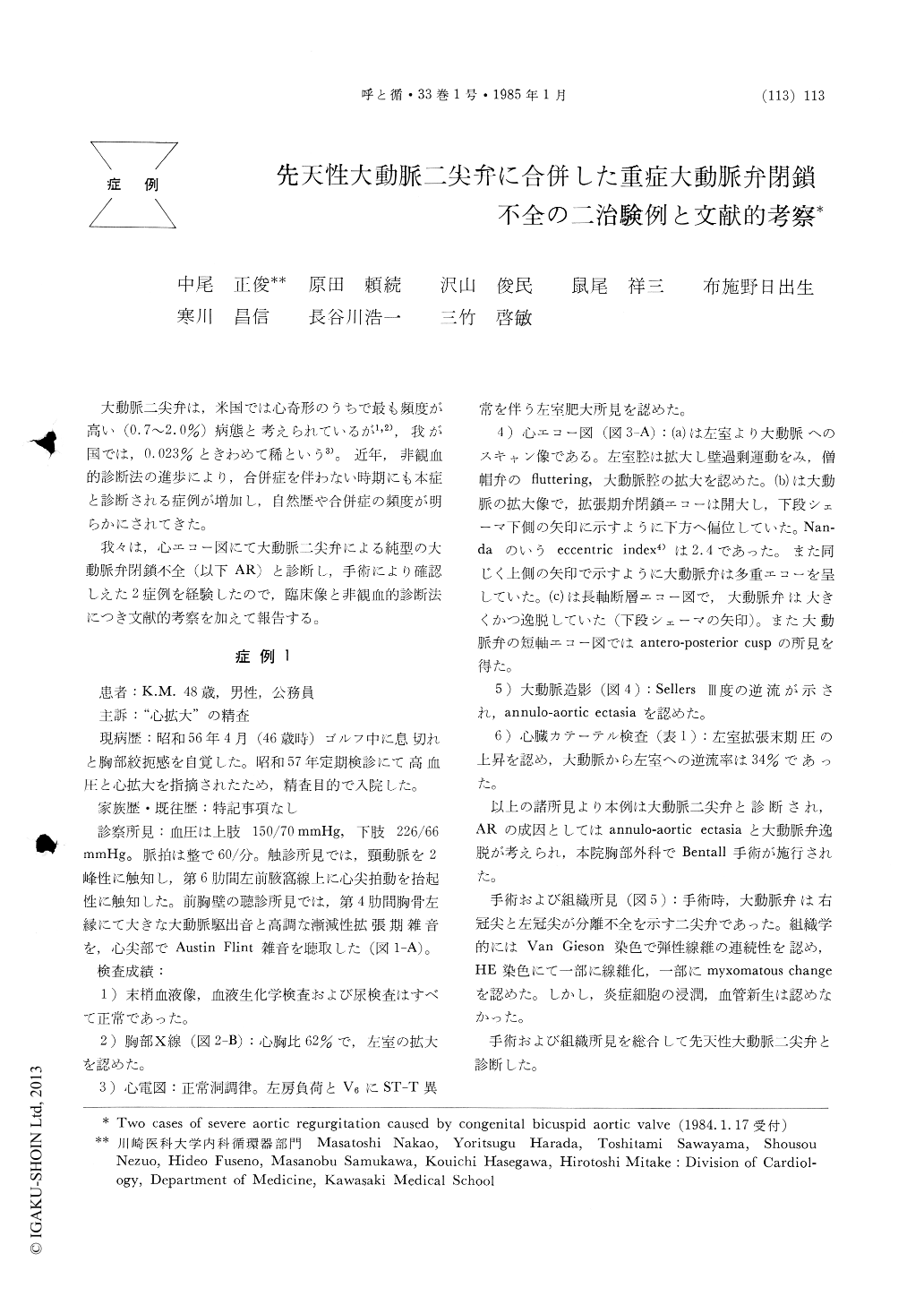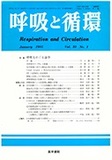Japanese
English
- 有料閲覧
- Abstract 文献概要
- 1ページ目 Look Inside
大動脈二尖弁は,米国では心奇形のうちで最も頻度が高い(0.7〜2.0%)病態と考えられているが1,2),我が国では,0.023%ときわめて稀という3)。近年,非観血的診断法の進歩により,合併症を伴わない時期にも本症と診断される症例が増加し,自然歴や合併症の頻度が明らかにされてきた。
我々は,心エコー図にて大動脈二尖弁による純型の大動脈弁閉鎖不全(以下AR)と診断し,手術により確認しえた2症例を経験したので,臨床像と非観血的診断法につき文献的考察を加えて報告する。
Two cases of aortic regurgitation due to congenital bicuspid aortic valve proved by surgery were presented. Case 1 was a 48-year-old male, who was lately pointed out cardiomegaly. Case 2 was a 33-year-old male, who was found to have cardiac murmur at age of 3. There was no history of rheumatic fever in both cases.
The chest X-ray showed an elongation of aorta and enlargement of left ventricle in both. The electrocardiogram disclosed left atrial overload and left ventricular hypertrophy with ST-T ab-normality in V6 in the first case, and left ventricular hypertrophy with negative U-wave in the second. The ausculation showed large aortic ejection sounds and high-pitched diastolic decrescendo murmurs over the fourth left intercostal space. The carotid artery pulse showed bisferiens pattern characteristic with significant aortic regurgitation in both cases. By M-mode echocardiogram eccen-tric index of aortic cusp was 2.4 and 1.7, respec-tively. The two dimensional echocardiogram gave aortic valve prolapse in the first case.
At surgery, the congenital ridge was situated at the commissure between the right and left leaflets in two cases.
Severe complication with congenital bicuspid aortic valve is a few, but if occurs, it is usually serious. The complications are classified into three types, which include aortic stenosis, aortic regur-gitation and infective endocarditis. Among the complications of a congenitally bicuspid aortic valve, pure severe aortic regurgitation unrelated to infective endocarditis, which we presented in this paper, is the least common (1.5% of autopsy cases with bicuspid aortic valve). "Annulo-aortic ectasia" and dissecting aneurysm are proposed as the mechanism by which a congenital bicuspid aortic valve becomes incompetent without in-fective endocarditis. And because of progressive development of these disorders, surgery with aortic valve replacement is unavoidably considered. Prognosis of congenital bicuspid aortic valve is originally favorable unless complications are encountered. Therefore diagnosis of congenital bicuspid aortic valve should be routinely made with aortic ejection sound and on echocardiogram, and careful follow-up studies should be absolutely necessary for possible development of the above complications.

Copyright © 1985, Igaku-Shoin Ltd. All rights reserved.


